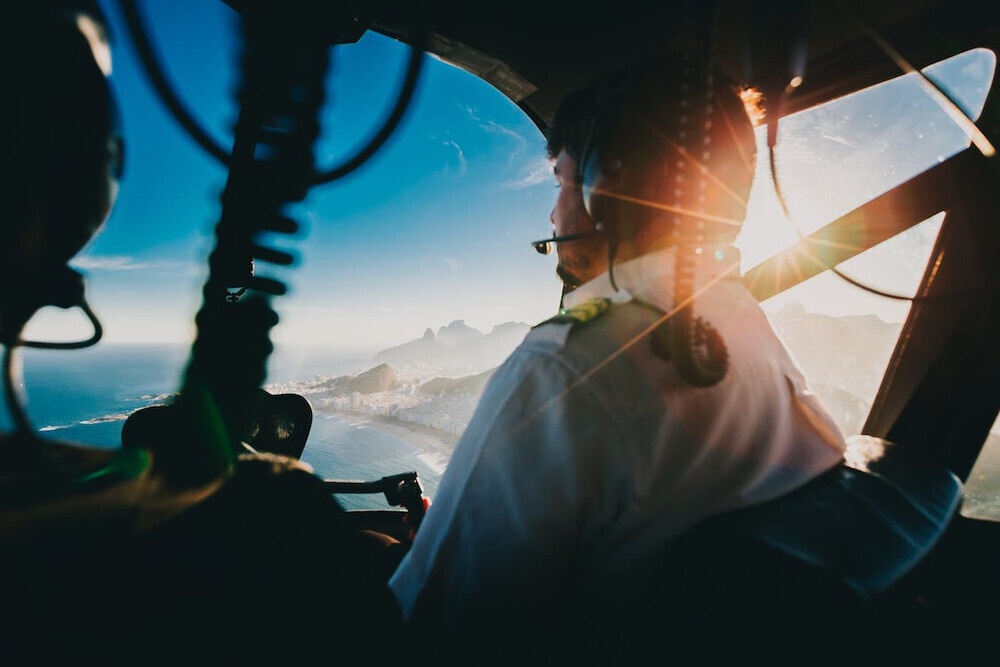
According to the U.S. Bureau of Labor Statistics, flight engineers, copilots, and airline pilots' employment is expected to grow by over 6% until 2030. Non-scheduled aviation services and regional airlines offer one of the best job prospects.
Flying for a regional airline offers a great opportunity to gain the experience required for major airlines. The career progression offers many lucrative opportunities, especially as the world recovers from the COVID-19 crisis with ramped-up demand for skilled pilots.
Statista report pinpoints a global shortage of pilots despite the aviation sector working to surpass 2020 levels by 2025. Regional airlines are making themselves more competent by offering relocation expenses, paid training, sign-on bonuses, and better benefits to attract pilots. Despite this, they're not skimping on flight safety.
The Difference between a Commercial and Airline Pilot
If you're considering switching to a regional airline as a first officer, you can either earn an aviation or associate degree or invest in private flight training certifications and advanced simulation programs.
Pilots must accumulate flight hours and have the Airline Transport Pilot (ATP) certificate and the commercial pilot's license, both of which are issued by the Federal Aviation Administration (FAA).
Airline pilots begin their careers as commercial pilots. Degrees such as a bachelor's in aviation, air traffic management, aerospace engineering, and aeronautical science can help you kick-start the journey toward becoming a commercial pilot.
Once they advance, it usually takes first officers up to three years to become a captain and six years to build the flying hours before they can get a job with major or regional airlines. Airlines can refer to major airlines, cargo airlines, and regional airlines—all of which vary significantly in terms of pay, quality of life, and lifestyle.
If your goal is to work for a regional aircarrier that operates smaller jets like the Canadair Regional Jet (CJR), don't miss out on the chance to learn from aviation experts at Momentum Flight Training.
Knowing that switching to regional airlines is no easy feat, and even experienced pilots need rigorous training regularly to keep up with the ever-evolving aircraft protocols and regulatory laws, the company introduced instructor-led aviation pilot training programs.

Pilots looking to transition into regional airlines or those looking to polish their skills for increased proficiency can opt for 1-day, 3-day, and 5-day aircraft simulator training programs.
The crj550 flight simulator training they use comprises realistic systems and components that reflect the environment of the original flight decks of Canadair Regional Jets 200, 550, 700, and 900.
The immensely experienced and proficient instructors walk pilots through systems, and operational training, call-outs, flows, and other procedural training in class using an Advanced Aviation Training Device. With only two students per class, the instructors can focus completely on helping each individual progress through their different struggles during the training.
The pilots looking to progress to regional airlines can familiarize themselves with Ground Proximity Warning Systems (EGPWS), Electronic Flight Instrumentation Systems (EFIS), Electronic Flight Instrumentation Systems (EFIS), Flight Management Systems (FMS), and Engine Indication and Crew Alerting Systems (EICAS), among others.
By the end of the flight safety simulator training, pilots learn how to make decisions proactively in emergencies and maintain aircraft control or handle routine line operations between airports.
If you're are moving forward to the regional airlines and will be flying the CRJ, call [833] 427-5876 for more information about their pre-set programs or speak to the instructor for tailored programs that effectively meet your learning goals.
About the Author
Peter's aviation career spans over two decades. He has cumulated 35,000 hours of flight time and worked as a designated FAA examiner after completing captaincy at a regional airline. He likes to learn about the latest technologies in aviation and reads pilot biographies in his spare time.


No comments yet